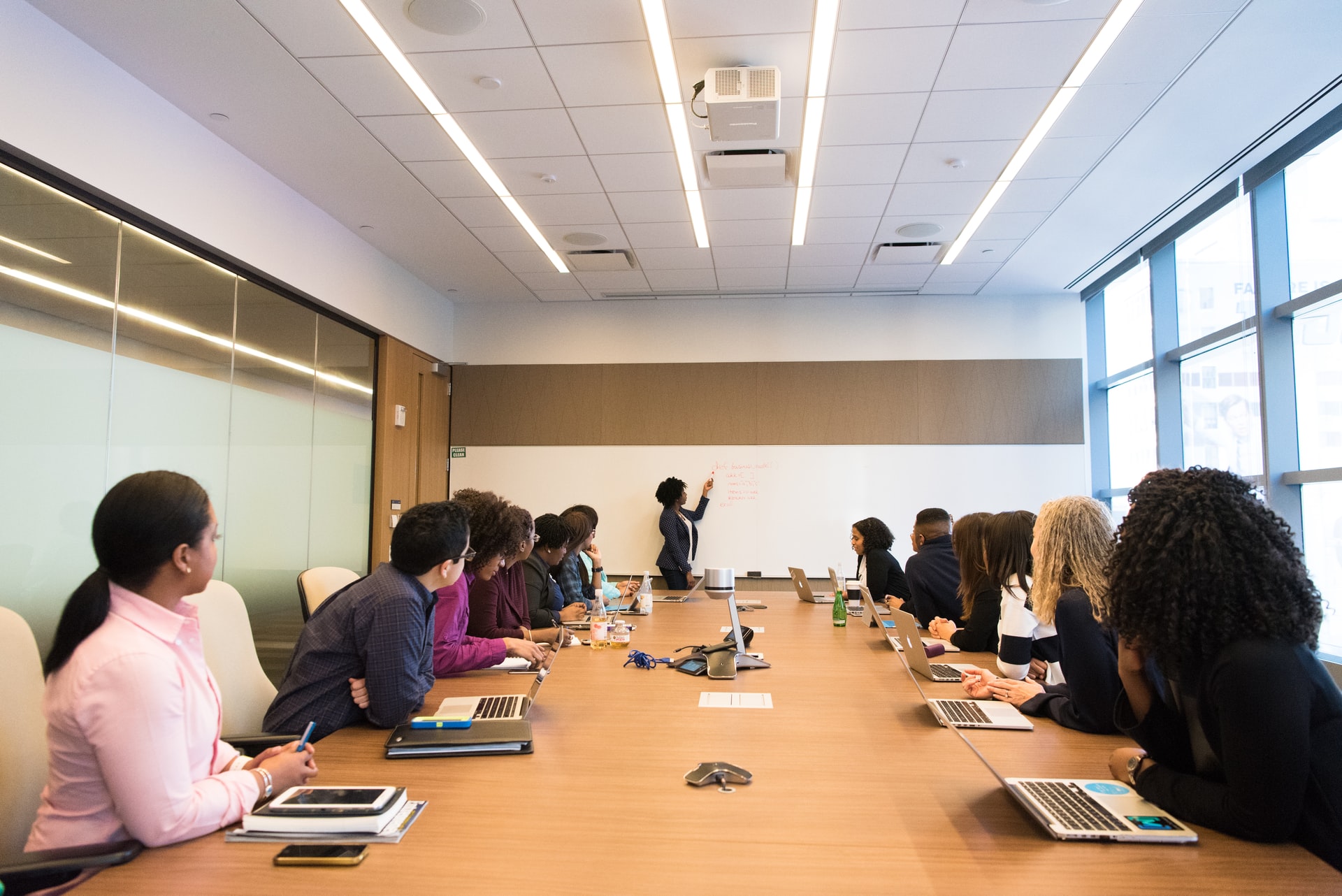What the Financial Fallout from COVID-19 Means for Schools

COVID-19 shocked education budgets and financial operations. Campuses nationwide are experiencing a severe lack of funding.
At the outset of COVID-19, many families had to make financial adjustments, which have led to drops in enrollment. Drops in enrollment mean a decrease in tuition collected.
And a decrease in tuition usually leads to a pause in operations. The cause and effect has been increasingly crippling to institutions. Increased costs during the pandemic have called for an unprecedented amount of flexibility.
Steep spending cuts during this time have led to a negative impact on student outcomes and reduction in personnel.
We may not know what’s to come, but based on what has happened so far, we can make a few projections on the future of post-COVID academia.
Driving The Divide of the Wealth Gap in Communities
Across the country, budget cuts have affected the vulnerable, low-income communities in the most destructive ways. American education funds are already hardly meeting schools’ thresholds. This pandemic could be the Jenga piece that sends many schools across the country crumbling.
When state funding takes a dive like this, the separation between the haves and the have-nots is crystal clear. For clarity, schools will need more money than the expected revenue already offered to make up for such dramatic events caused by the novel coronavirus.
Communities will be looking to the government to:
- Have proper compliance measures established for the return of in-person instruction.
- Reduce food-insecure for students.
- Provide technology resources for digital citizenship and online learning.
- Remediate other disenfranchising factors.
Education leaders must rank equity as a top priority during all decision making processes for districts. Additionally, this will determine budgets and will vary with the current economic status.
Parents and students are even more dependent on schools for their services. Unfortunately, schools scaled back services tremendously with the ongoing pandemic.
Not to mention, teachers are having to teach in the middle creating no advancement for the gifted and talented programs. Those who are falling behind are being forced forward as the school year goes on. It’s now even more challenging for states to perform placement assessments for both ends of the spectrum to see each student’s success rate.
Various Resources At Risk Due to Budget Cuts
Other than the loss of life, the novel coronavirus has left schools at a loss of learning.
It seems the cuts to school funding are the real threat to students—almost as much as the virus infection.
Particularly for more vulnerable and disadvantaged communities, issues such as food insecurity, special needs resources, and mental health are a top concern.
Food Insecurity
On the topic of food insecurity, Harvard Chan School faculty members noted that 2.5 million children have fallen below the poverty line since the start of the pandemic. This data has shown the number of food-insecure households in the U.S. doubled from 14% to 28%.
Food insecurity was somewhat addressed with national free meal programs. However, with virtual learning and budget cuts, food-insecure communities are suffering. Families may look to local food banks, but even those organizations are stretched thin with limited resources currently.
You can’t forget how fast everything happened. Children were hitting new learning curves, becoming math stars, or learning to be more social one day, then the next day, they were handed a computer and told: “go learn.” That is, if their school had the resources to offer technology for remote learning.
Digital Equity
The lack of digital equity in households has been a primary focus amidst remote learning. Not only has facilitating the continuity of education online been a pain point for teachers, but there are also kids with limited to no access to the internet.
When we sat down to interview Matt Heifield, a Digital Equity advisor at COSN, he explained various students’ opportunities and connectivity. Addressing the lack of digital citizenship investment amongst students is abandoning some of the cornerstones that we call a “strong education.”
There are many great things that happen through technology. If access is not granted to students, we risk ensuring they’re getting an adequate opportunity to learn. Our school system is changing whether we like it or not.
Mental and Physical Health
Virtual instruction options are opening up, But one of the downsides expressed by some against remote learning that in-person learning satisfies mental health needs extending farther than teachable moments.
However, we must ask: how safe is this high-risk learning model currently? Without proper compliance measures, your school is at risk of a possible COVID outbreak.
Still, even though meeting in-person is considered high-risk contact at the moment, students still need an outlet to nurse their mental health. Just like there are physical health first responders, they need mental health first responders so they can organize how they're feeling mentally and emotionally.
Managing social and emotional learning gets more difficult in the now virtual realm of schooling. When we sat down with the Founder and CEO of Gaggle, Jeff Patterson, he reminded us how quickly schools had to modernize with distance learning provisions, and empathy left the picture. Teachers’ performance expectations were even higher, and students were expected not to focus on anything except school. With all that has transpired in the past months, that’s nearly impossible.
Students are going through a myriad of challenges with mental health right now. Even the forgotten population of medically complex children are experiencing a heightened risk of doubling effects from COVID-19. These students are not a uniform group.
Students under this umbrella have mild to severe cognitive, physical, social, emotional, and behavioral disabilities. Parents and teachers are fine-tooth combing best practices to make sure special populations are still advancing despite their treatment complexities.
By no means has functioning in the midst of a pandemic been a walk in the park. These added hardships are why education leadership needs to exhaust all resources, financial and physical, to keep students and communities safe.
Funding is not as fluid at the moment. So, being financially responsible is necessary for the advancement of student progress.
5 Tips to Recover Funds from the COVID-19 Loss of Learning Time
COVID-19 crushed school budgets, leaving campuses with little financial security. Here are five long-term tips to coach institutions on how to allocate budget spending with COVID-19 revenue challenges.
- Make Your Budget Work For Your School Improvement Plan: Ethan Taub, CEO of Loanry, expresses that districts “must do all they can to reduce their expenditures and seek to improve the utilization of their existing resources.” Review past budgets to ensure the district is not over-spending and surely not under-spending in high necessity areas. For example, these areas would be special population resources, digital equity, and physical/mental health resources for student safety.
- Understand the Basic Principles of School Budgeting: Know your different funding avenues to piece together where you need to land to channel a flexible budget. CEO of Creditful, Chane Steiner, wants to remind schools to ask themselves: Is this expense “financially viable?” As you assess your school’s fundamental financial health, Steiner mentions keeping in mind the financial limitations of families, too. You “don't want to be creating more issues for families” struggling through the pandemic.
- Bulk Up Budget Reserves: If your state has the money in reserve, make sure to request funds. This will give you flexibility and the ability to help your high-poverty students. Since districts in high-poverty communities were hit hardest by the pandemic, the money in reserve would prove helpful, so there is no further increase in program cuts.
- Streamline Progressive Funding: Funding will take careful formulation. Balance the equity that needs to be prioritized amongst high-poverty districts vs. low-poverty districts. Follow spending trends to note little by little where increased needs lie. This progressive funding style will better equip these schools as we move towards the post-pandemic timeline.
- Balance Revenue Personas: State and local revenue should be configured for a more efficient approach. Central portions of your funding portfolios can be the buffer for risk management shortfall avoidance. Gaining grants and private donors can provide relief to administrative burdens and implement more robust pathways for safeguarding precautions against COVID-19.
For the next six months, review your current budget closely. Also, begin to find trends that will make forecasting for next year’s budget easier. This method will help you see where you need to move money in the future.
Your end goal should be to monitor proposed expenditures without exceeding projected income. Build your surplus, but remember to address emergency needs with monies that will satisfy various immediate issues.
Put Schooling Into Perspective
We’re left with a lot of questions. How can schools bounce back from this? COVID-19 is not going away in the blink of an eye. Will fundraising need to be ramped up?
How will the government step up? If more funding is distributed, where would be the most detrimental areas to tend to first? We have to think of our students–the next generation that will emerge in the world.
While it seems like there are no perfect or permanent solutions for schools, parents will have to find comfort in schools doing the best they can.
Schools should be striving to partner with parents, and empathy needs to extend from both parties. There should be a network provided from the school to home pipeline that prioritizes more than schooling.
Aim for ways to provide not only physical safety but also emotional safety. Students need responsive adults to make them feel protected, infused with confidence and raising their educational value.
With these implementations, including proper budget allocations, schools and students will come out resilient. From a time where everything changed overnight, we can focus on the good that was deposited along the way.











